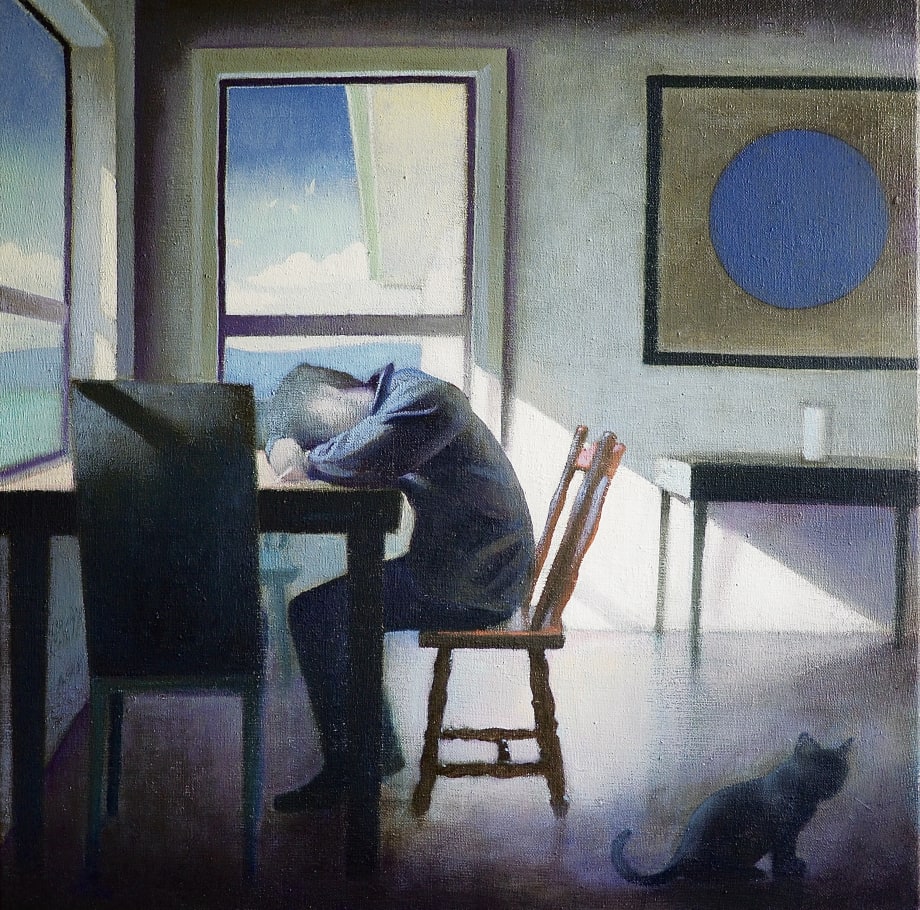Gavin Chai captures fleeting moments. All the stars in the sky sees Chai turn his observant eye and skilful hand to illuminate even the sparsest scenes; a shaft of light through an open door, the geometries of shadows cast upon an empty hallway, the crumpled sheets of an unmade bed, a dark slither of star-studded sky through a window. Chai notices those things often overlooked by others, endowing them with a significance that is both beautiful and melancholic.
Gavin Chai captures fleeting moments. All the stars in the sky sees Chai turn his observant eye and skilful hand to illuminate even the sparsest scenes; a shaft of light through an open door, the geometries of shadows cast upon an empty hallway, the crumpled sheets of an unmade bed, a dark slither of star-studded sky through a window. Chai notices those things often overlooked by others, endowing them with a significance that is both beautiful and melancholic.
Like many great painters that have come before, the young artist is particularly occupied with harnessing the illusive qualities of light. “Light, for me, is not just a visual motif. It is a power that can transcend, unite and harmonise,” says Chai. In her poem There's a certain Slant of light (1861)American poet Emily Dickinson (1830-86) described the “Heavenly Hurt” evoked by a particular slant of light, the way in which it can simultaneously elicit both awe and anguish. Such is the sensation upon viewing Chai’s paintings, which are suffused with a poignancy that is at once undeniably earthly and remarkably celestial. While Dickinson’s words were penned last century, they feel wholly apt when considering Chai’s own poetic sensibilities and his profound fascination with the history of art and painting practices.
While the artist's subject matter is distinctly contemporary – drawn from his own immediate surroundings – some works appear almost as if transported from another time, gesturing toward the heightened intimacy or religiosity of those interior scenes of Renaissance painters such as Jan van Eyck (1390-1441) or Fra Angelico (1395-1455), which positioned the viewer at the threshold or located within the space itself, as if the painting was a room within which one could walk around. Figures themselves are less common but not entirely absent from Chai’s paintings. “I paint people, even when I’m not,” notes the artist. “Much of my ongoing themes of loneliness and isolation, though inexplicitly portrayed, come from my own struggles with people. It’s easier for me to talk with a vase than with a person. Yet, I have always found people the most fascinating.” When figures do appear, they are often rendered slightly obscured, their faces gently blurred or distorted.
Chai’s works are permeated with a sense of quietude. Rather than pursuing monumentality, the artist instead seeks to elevate the mundane. Several recent works are visually inclined toward more surrealist tendencies, with their traces of dreamlike landscapes, gnarled trees, and unexpected colour palettes reminiscent of the works of Salvador Dali (1904-1989) or Max Ernst (1891-1976).
Gavin Chai (b. 1997, Malaysia) is based in Auckland Tāmaki Makaurau. Chai has a Certificate in Applied Technology (Carpentry) from Unitec Institute of Technology (2016) and a Bachelor of Visual Arts from Auckland University of Technology (2020). He has recently the recipient of the Zinni Douglas Merit award, Walker and Hall Art Award, Waiheke Community Art Gallery and received three awards at the Otago Art Society Cleveland National Art Awards. Recent exhibitions include Strange Paradise at Föenander Galleries, Tāmaki Makaurau; group exhibition Idyll at Page Galleries; Adam Portraiture Award Touring Exhibition; Character Study: the figure in action and inaction, Arts in Oxford; Accept each word spoken with love, Northart, Tāmaki Makaurau; and Blue and White, Northart, Tāmaki Makaurau. His works are held in collections including Porirua City Council, The Stevenson Collection, and the New Zealand Portrait Gallery.

